LESS IS MORE
From Truth and coffee to the art of chocolate
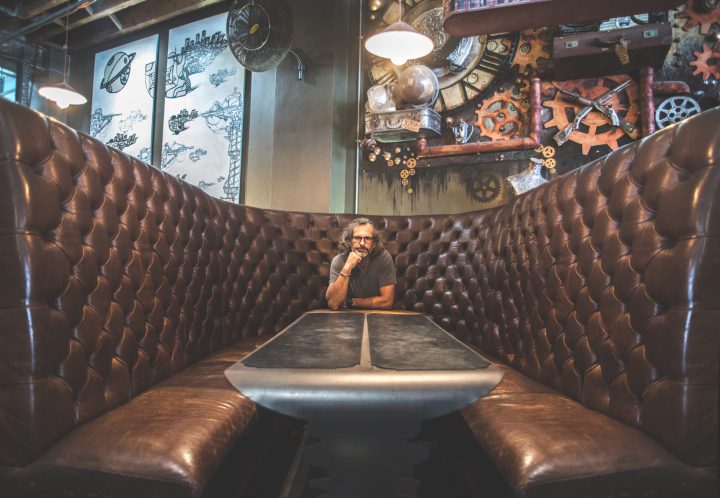
David Donde applies his experience in the coffee trade to create a new type of chocolate.
“Antoine de Saint-Exupéry, the guy who wrote The Little Prince, said, ‘Perfection is achieved not when there’s nothing more to add, but when there’s nothing left to take away’.”
This is what David Donde said to me in a recent interview when I asked him how he came to create Minimalist Chocolate, which has just two ingredients: cocoa and milk.
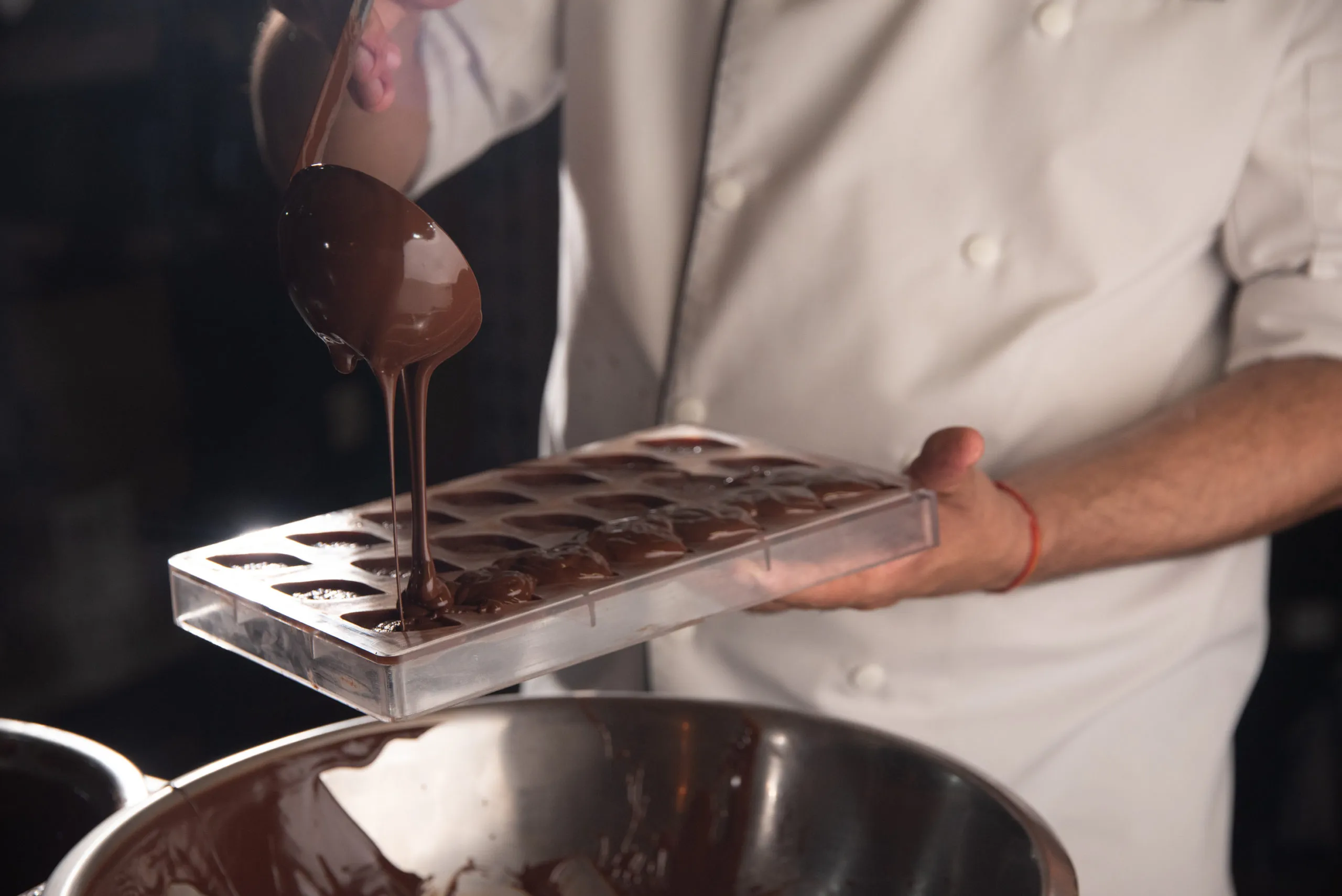
Bobby Kumar pours tempered Minimalist Chocolate into moulds for bonbons. (Photo: Crave Concepts)
Cafephiles will already be familiar with the name David Donde – the pioneer of speciality coffee in South Africa and the creator of both Origin Coffee Roasting and the internationally acclaimed, steampunk-themed Truth Coffee Cult café on Buitenkant Street in Cape Town.
Those who enjoy imbibing beverages with a little more kick may also know he’s behind Art of Duplicity, which in 2020 was not only named South Africa’s Cocktail Bar of the Year at the BAR Awards but made the long list for the World’s 50 Best Bars at #88.
Donde’s expansion into chocolate was inspired by the first brutal phase of lockdown when both Truth and Art of Duplicity were forcibly closed.
“Everyone needed to pivot to get away from Covid-19. When your turnover is at zero and you still want to pay your staff, you have to think carefully about what you’re going to do … You start thinking, well, what do we do well, and how could we apply that to other industries,” he explained.
It was then that Donde had an epiphany. The solution was chocolate.

There are five types of bonbons in the Minimalist Chocolate range. (Photo: Crave Concepts)
“When I got involved with coffee [in 2003], there was this new thing called third-wave coffee. So first-wave coffee was the invention of coffee, going from Ethiopia to Yemen and the Arab world. Coffee was this bitter, black mess. The second wave of coffee was the invention of the Italian coffee machine. So we now have a new process, and things get interesting.”
“The third wave of coffee gets traced back to a guy called David Schomer, who goes to Italy and asks the question, ‘What makes this coffee great and that coffee kak’. He single-handedly invents the science of coffee.”
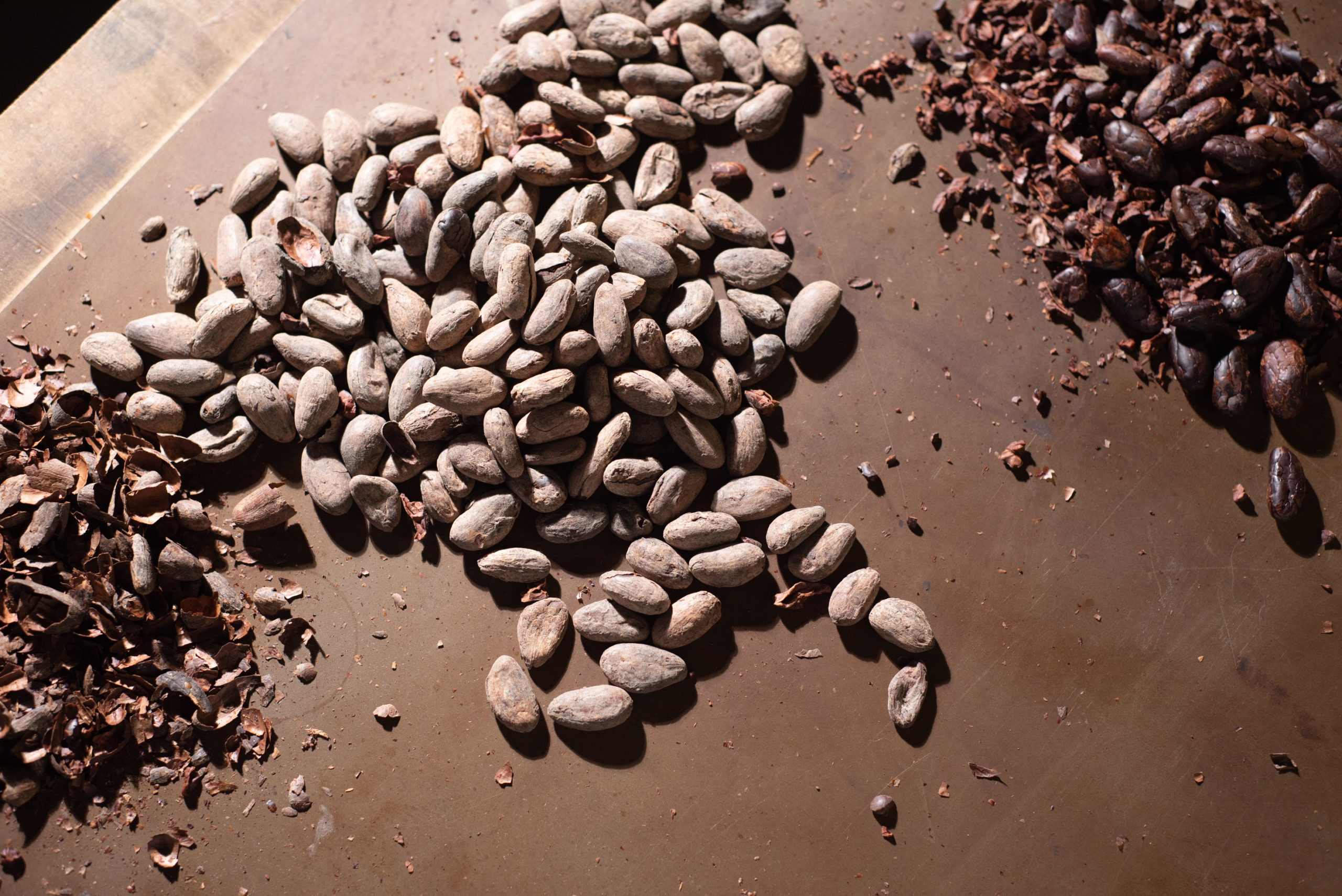
The roasted, husked chocolate beans. (Photo: Crave Concepts)
“Fourth-wave coffee, according to some people, comes along when we take that science and apply art to it. And fifth wave coffee – according to one man on the planet, who runs all the coffee festivals [Jeffrey Young] – is when we apply good business principles back to that science and art.”
Loosely translated, from a consumer’s point of view, third-wave coffee has been produced in such a way that it no longer requires sugar; it should feature flavour over bitterness. (In fact, Donde’s umbrella company for Truth is called No Sugar Required.)
Donde’s aha moment was when he realised that if well-made coffee can be enjoyed without sugar, then the same should be true for chocolate, which follows a similar roasting method. Chocolate, however, is generally still stuck in the first or second wave.
Of course, good coffee – and chocolate – starts with good quality beans.
“As an Australian barista once explained very carefully to me, you can’t polish a turd,” Donde recalls.
Using this invaluable insight, Donde then teamed up with Ken Walton, Director of Operations at Truth, and they started looking into sources for superior cocoa, the bean that chocolate is made from. After roasting a number of samples, they settled on Roça Bella Vista, a small-scale, Free Trade and organic plantation on the island of São Tomé, which historically is known to grow some of the finest cocoa in the world.

Cocoa beans are bigger than coffee beans. (Photo: Leah van Deventer)
From there, it was trial and error.
“My biggest advantage when I got involved in coffee was having nobody to teach me how to do things. That empirical thinking of ‘try, test, evaluate, repeat’ is how we got this far in coffee, and it’s definitely how we got this far in chocolate. I think not having the expertise, and having that beginner’s mind, is sometimes a huge advantage.”

David Donde checking the beans’ aroma. (Photo: Crave Concepts)
As I can attest, the resulting Minimalist Chocolate is a luxuriously creamy, flavourful and mouth-filling delight that satisfies your chocolate craving in just a few blocks. It’s so good that it’s hard to believe it contains only cocoa and milk. So how did Donde and Walton get it right?
“Buying well-grown, well-processed cocoa is the first step. And the second step is understanding two processes that any food that gets cooked for flavour works with. One is the pyrolytic process, and the other is the Maillard process.”
The first is the burning of food, which ultimately turns it into bitter charcoal, while the second is the browning of food, which caramelises it and develops flavour. As Donde says, chocolate is not inherently bitter or dry, rather those characteristics are a result of the beans being rapidly scorched instead of slowly browned.
To get well-developed flavours in cocoa, the trick is understanding how to fluctuate the temperature at different stages of the roasting process.
“The real answer is to maximise the Maillard process and minimise the pyrolytic process, that’s it. You don’t need to mask dryness and bitterness in chocolate, you need to avoid them.”
So what of the texture? Donde says this is pretty clear cut: it amounts to relentless grinding of the cocoa beans.
“You grind until it becomes a paste, and then you grind the paste until it becomes a liquid, then you grind the liquid until the particles are finer and finer and finer and finer. Quite simply, it’s more time. It’s not a huge secret.”
“We don’t take the shortcuts of adding stuff in. Great chocolate is delicious without additives. We do want additives for things like mouthfeel, and that additive that we’re working with is milk, and it works really nicely.”
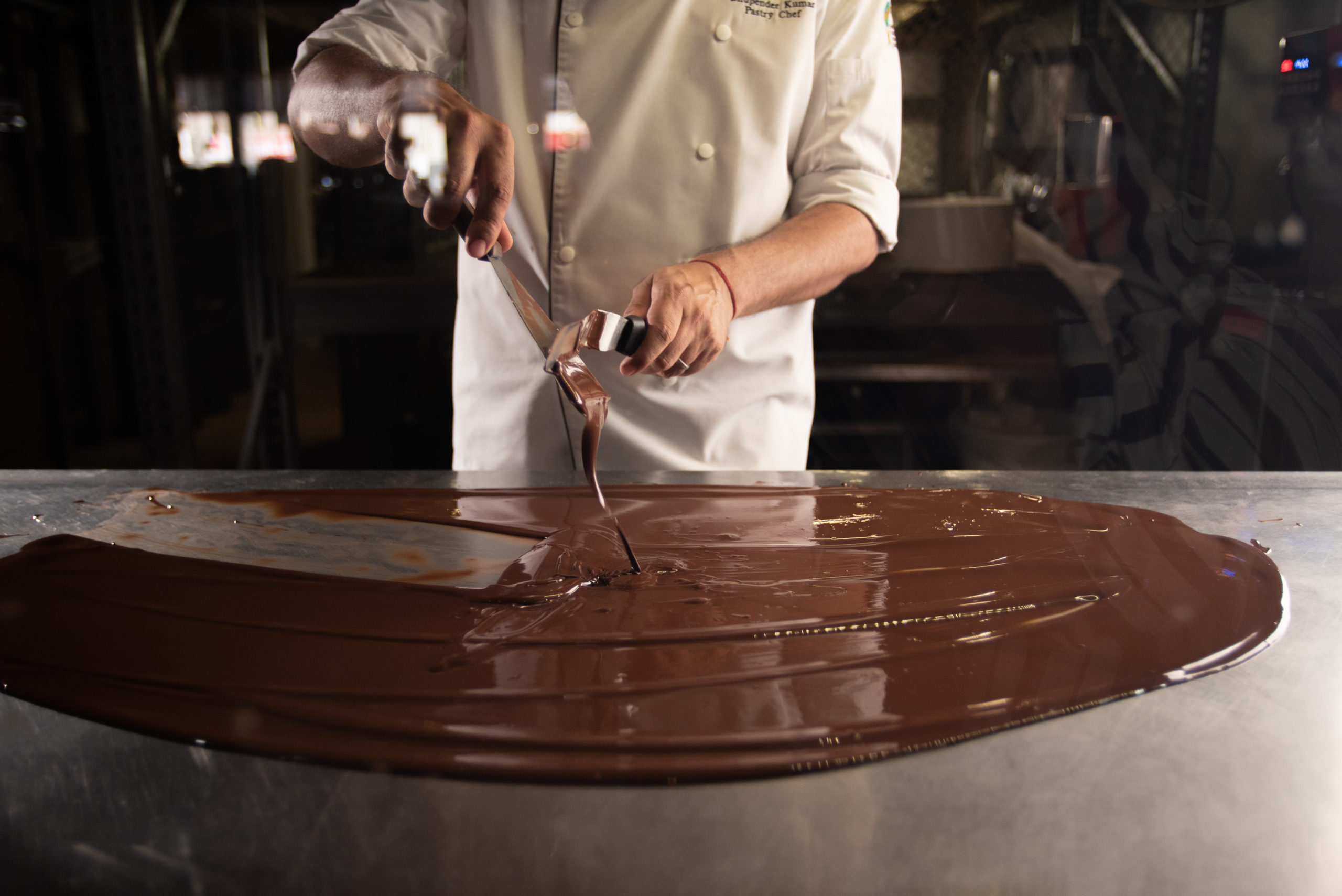
Bobby Kumar working the chocolate. (Photo: Crave Concepts)
Of course, tempering plays a role in texture too – the final step in making a chocolate bar, when you melt it down at just the right temperature and mould it. Correct tempering will yield the perfect crystalline structure, which means a shiny, smooth bar that gives a satisfying snap when you break it.
Everything is done on-site at Truth by existing staff members, who can now add chocolate making, moulding or operations to their skillsets. The roasting is headed up by coffee roaster Oliver Rollinson, while pastry chef Bobby Kumar tackles the bars. Alyssa Blom handles logistics and overall production.
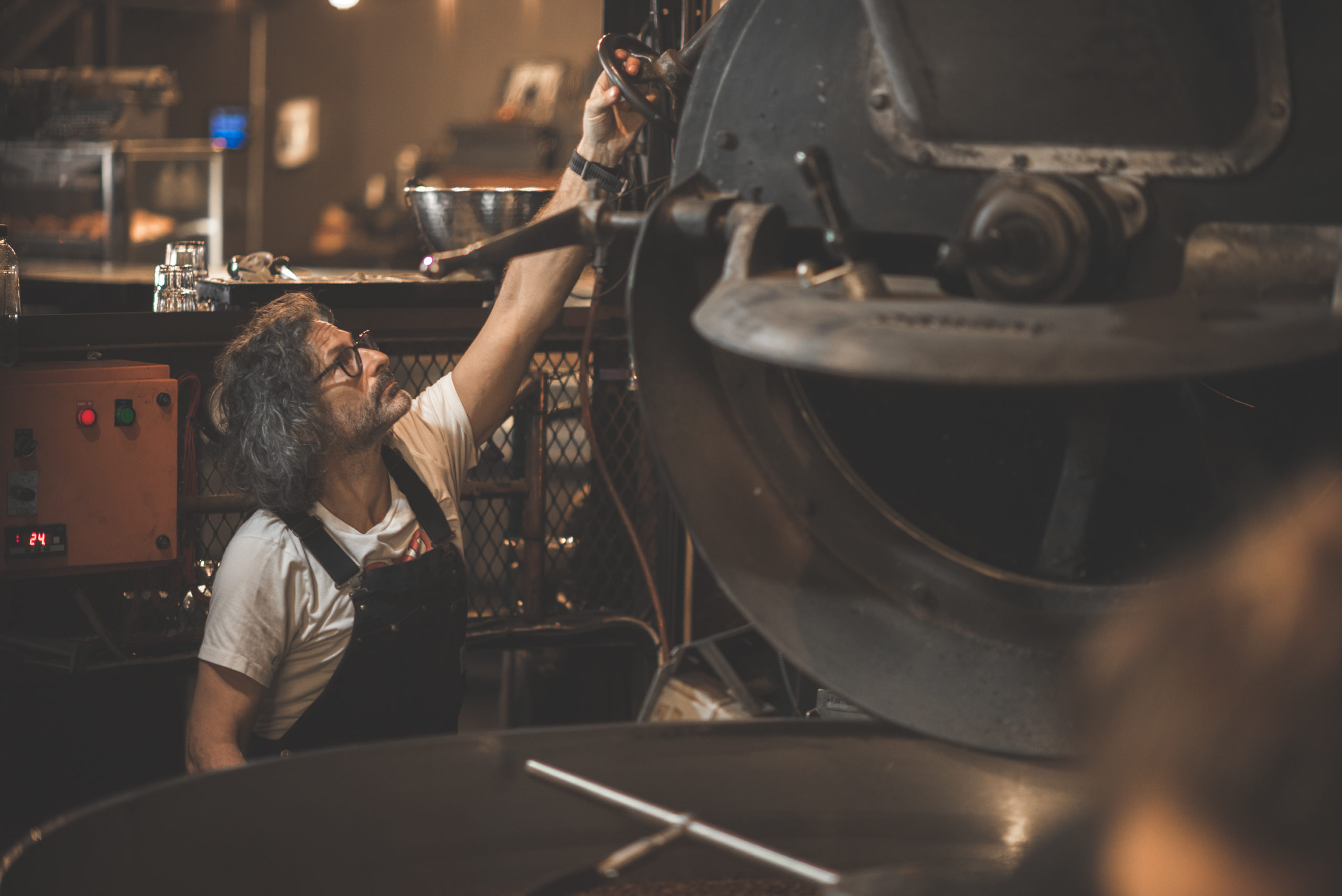
Minimalist Chocolate is made with the roasting equipment at Truth in Cape Town. (Photo: Crave Concepts)
“It was a criterion that we didn’t want to employ anyone new. We wanted to give everyone a chance to make a decent living. That was core to the project, that’s not an accident.”
When asked what the market is for no-sugar, no-additive chocolate, Donde wryly replied, “I’ll tell you in a year’s time.”
Of course, it’s not like he’s flying completely blind. “There are a lot of diabetics out there and keto people and others who don’t want sugar in their diet, or can’t have sugar in their diet. But I think the bigger market is for food that’s food. Food that’s luxury in and of itself. And I think that’s really our market, true luxury chocolate, that gives you real pleasure. Why must we be eating stuff that’s bad for us when we can have the exact same thing that’s good for us?”
Hear, hear. DM/TGIFood















 Become an Insider
Become an Insider
Comments - Please login in order to comment.